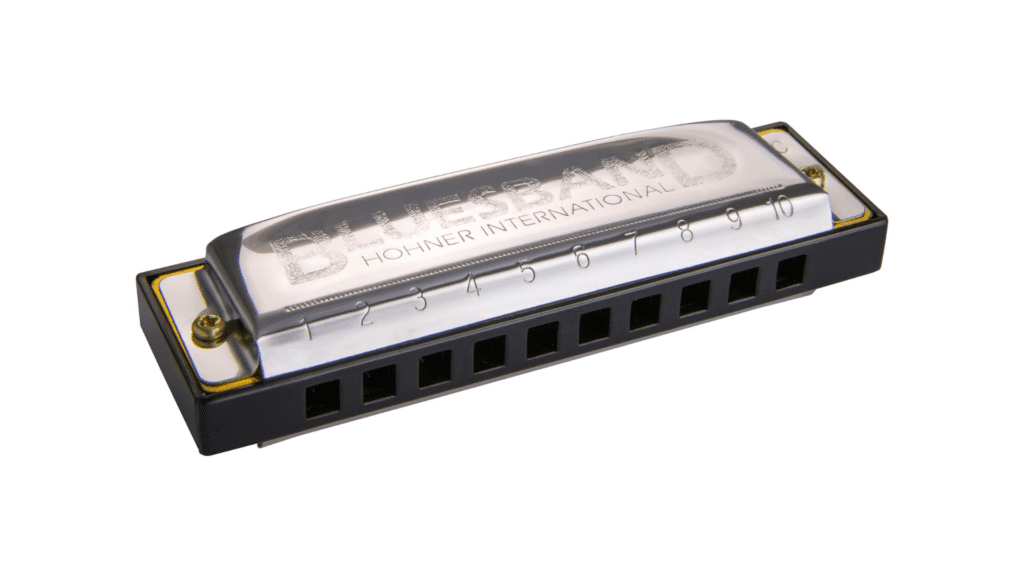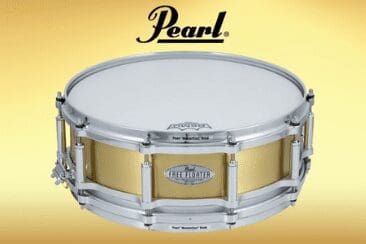Music has a vast landscape filled with numerous instruments, each with its own unique history, design, and sound. While grand instruments like the piano, tuba, or double bass might steal the limelight, there’s a fascinating world of smaller, portable instruments that deserve a closer look. This guide takes you on a voyage through 20 of these small instruments, exploring their rich histories and distinct sounds.
Guide to Small Instruments
1. Harmonica

The harmonica, also known as a mouth organ, is a free reed wind instrument used worldwide in many musical genres, notably in blues, American folk music, classical music, jazz, country, and rock. The instrument originated in China, where it was known as the Sheng. The harmonica is played by using the mouth (lips and tongue) to direct air into and out of one or more holes along a mouthpiece. Each hole communicates with a chamber containing at least one reed, and the vibrations of the reeds produce sound. During the 20th century, the harmonica gained popularity in the United States as a blues instrument.
2. Ukulele
The ukulele is a member of the lute family of instruments. It generally employs four nylon strings and is associated with music from Hawaii, where the name roughly translates as “jumping flea”. The instrument was brought to Hawaii by Portuguese immigrants and quickly gained popularity due to its simplicity and unique sound. The ukulele resembles a mini-guitar and is known for its warm, gentle tones.
3. Tambourine
The tambourine is a musical instrument in the percussion family consisting of a frame, often of wood or plastic, with pairs of small metal jingles, called “zils”. The tambourine originated in Egypt, Greece, and the Middle East, and it is often used in folk, pop, and religious music. The instrument can be held in the hand or mounted on a stand and can be played in numerous ways, from stroking or shaking the jingles to striking it sharply with the hand or a stick.
4. Recorder
The recorder is a woodwind musical instrument in the group known as internal duct flutes—flutes with a whistle mouthpiece. It originates from Medieval Europe and is often taught in schools due to its simplicity and affordability. Despite its simplicity, the recorder is capable of a wide range of tones and articulations, making it a versatile instrument in a variety of musical styles.
5. Piccolo
The piccolo is a half-sized flute and a member of the woodwind family of musical instruments. It originated in Europe in the 18th century and is known for its high-pitched and piercing sound. The piccolo plays an octave higher than the regular flute and is often used in orchestras to add brightness to the sound. Its name comes from the Italian word for “small”, reflecting its size compared to the standard flute.
More Small Instruments
The practice of jam sessions using instruments, especially small instruments, particularly those characterized by spur-of-the-moment creativity and improvisation, holds a revered and almost sacred status among musicians worldwide. These sessions transcend cultural and geographic boundaries, uniting artists through the universal language of music. Indeed, where verbal communication may falter, music steps in to bridge the gap, connecting souls in a way that words often can’t.
6. Mandolin

The mandolin originated in Italy during the 18th century. It belongs to the lute family of stringed instruments and is characterized by a teardrop-shaped body. The mandolin is typically played by plucking the strings with a plectrum. It has a distinct, resonant sound and is commonly used in bluegrass and folk music. The instrument has also found its way into classical music and some forms of rock.
7. Kalimba
The Kalimba, also known as the thumb piano, hails from Africa. It consists of metal tines attached to a wooden platform which are plucked with the thumbs to produce sound. The instrument’s design and the number of tines can vary greatly, as each African region has its own variant of the kalimba. The kalimba is known for its unique, melodic sound, often used in traditional African music and modern music styles alike.
8. Triangle
The triangle is a simple percussion instrument that originated in medieval Europe. It’s a metal bar bent into a triangle shape and struck with a beater to produce sound. Despite its seemingly simple design, playing the triangle requires a certain level of skill, particularly when it comes to playing complex rhythms. It’s often used in classical music, samba, and various forms of folk music.
9. Jew’s Harp
The Jew’s Harp is a mouth-resonated pluck instrument that originated in Asia and is now used globally. The player plucks a flexible metal or bamboo tongue while changing the shape of their mouth to alter the resonance. Interestingly, the name of the instrument is not related to the Jewish community; it’s thought to be a corruption of ‘jaw harp.’ The small instrument is known for its buzzing, twanging sound and is often used in folk music.
10. Castanets
Castanets are percussion instruments that originated with the ancient Persians and Greeks but were popularized in Spain. They consist of two concave shells joined on one edge by string. These shells are clicked together in rhythmic patterns to accompany music and dance. Castanets are an essential part of flamenco dancing, and they’re known for their sharp, clicking sound.
Unique Ones
The practicality of traveling with your primary musical instrument or instruments may be a challenge. This is especially true if you’re planning a short trip to a nearby city. For instance, the sheer size of an upright bass makes it virtually impossible to transport without considerable effort and resources.
11. Ocarina

Origin: As noted, the ocarina has roots in ancient civilizations of Central and South America. These clay or bone instruments have been found in archeological digs, some dating back thousands of years.
Description: This small, typically egg-shaped wind instrument is played by blowing into it and covering or uncovering finger holes to produce different pitches. The sound is haunting and ethereal, somewhat reminiscent of a flute but with a more earthy tone.
Trivia: While the Ocarina has a long and varied history, it was thrust into the global limelight by the video game “The Legend of Zelda: Ocarina of Time”. In this game, the protagonist, Link, plays an ocarina to perform magical songs that influence the game world.
12. Xylophone
Origin: The xylophone has ancient origins in both Southeast Asia and Africa. Each region developed its own distinctive style and technique of playing.
Description: The xylophone is made of wooden bars of different lengths and pitches. These bars are laid out in a manner similar to a keyboard and are struck using mallets. The wooden bars produce a bright, resonant tone when hit.
Trivia: “Xylo” means “wood” in Greek, and “phone” means “sound.” So, the instrument’s name literally translates to “wooden sound.”
13. Bodhrán
Origin: This instrument is distinctly Irish in origin, having a deep-rooted history in traditional Irish music.
Description: The bodhrán is a circular, shallow drum, usually made from goatskin stretched over a wooden frame. It is played with a short stick, often called a “tipper” or “beater.”
Trivia: While it’s a staple in Celtic music, its use in traditional Irish music was somewhat controversial in the past. Nowadays, it’s widely accepted and loved.
14. Claves
Origin: Claves trace back to Africa, but they became especially integral in Cuban music and are now synonymous with Afro-Cuban rhythms.
Description: Claves are a simple instrument, made of two cylindrical wooden sticks. The sound is produced by striking one stick against the other.
Trivia: The rhythm played on the claves is often the foundational rhythmic pattern in many Afro-Cuban genres, and it holds together the various instruments in an ensemble.
15. Pan Flute
Origin: The pan flute has been used in various cultures, with notable histories in ancient Greece and among the indigenous peoples of the Andes in South America.
Description: The pan flute consists of multiple pipes, often made from bamboo or reeds, bound together side by side in ascending order of length. The player blows across the open ends of the pipes to produce sound.
Trivia: In Greek mythology, the pan flute is associated with the god Pan, who was said to have created the instrument in his pursuit of a nymph named Syrinx. In Andean culture, the pan flute is a symbol of unity and harmony, and it’s often used in traditional celebrations and ceremonies.
Fun Ones
16. Glockenspiel

Origin: The glockenspiel originated in the medieval period in Europe. Its name comes from the German words for “bell” (Glocken) and “play” (Spiel).
Description: The glockenspiel is a percussion instrument composed of a set of tuned metal bars arranged in the fashion of a keyboard. Each bar represents a different pitch. The player uses a pair of hard mallets to strike the bars, producing a bright, sharp sound.
Trivia: The glockenspiel is commonly used in orchestral music for its distinctive sound. It is also a staple in marching bands and is often found in wind ensembles.
17. Accordion
Origin: The accordion was invented in the early 19th century in Germany by Friedrich Buschmann.
Description: The accordion is a box-shaped instrument that produces sound through bellows that push air through reeds, which are controlled by a series of keys or buttons. The right-hand side typically has a piano or button keyboard, while the left-hand side features buttons for bass and chord accompaniment.
Trivia: The accordion is popular in various types of folk music across Europe and America, including polka, zydeco, and conjunto music. It is also used in some forms
of classical and pop music.
18. Charango
Origin: The charango comes from the Andean region of South America, particularly from countries like Bolivia, Peru, and Ecuador.
Description: The charango is a small stringed instrument, similar to a ukulele or a small guitar. Traditionally, it was made with an armadillo shell for the back, but wood and other materials are now more commonly used.
Trivia: The charango plays a central role in Andean folklore and traditional music. It is also used in contemporary music genres such as nueva canción and rock.
19. Spoons
Origin: The use of spoons as a musical instrument can be traced back to ancient times and has been found in various cultures around the world.
Description: The spoon instrument consists of a pair of spoons held back to back and struck together to produce a rhythm. They can be played by hitting the spoons against the player’s own body or against another surface.
Trivia: Spoons can be made of various materials, including wood, bone, or metal. They are commonly used in folk and traditional music, especially in American bluegrass and Irish traditional music.
20. Cuíca
Origin: The cuíca originally comes from Africa but was popularized in Brazil, where it became a staple of samba music.
Description: The cuíca is a friction drum that has a stick attached to the center of the drumhead. The player rubs the stick with a wet cloth and presses on the drumhead, creating a high-pitched squeaky sound.
Trivia: The cuíca is an essential instrument in samba rhythms and is often heard during Brazilian Carnival celebrations. Its unique sound is sometimes compared to the call of a monkey, which is why it’s also known as a “lion’s roar” or “monkey drum”.
Closing Thoughts
Small instruments hold a special place in the vast world of music. With their unique timbres and portable designs, they’ve been embraced by cultures worldwide. Whether you’re a professional musician, a hobbyist, or a curious enthusiast, delving into the realm of these compact instruments can be a delightful and rewarding experience.







